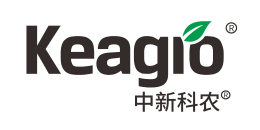Syngenta crop protection sales flat in H1 2019
Time:2019-08-02
Syngenta’s sales were 2 percent lower at constant exchange rates (CER) versus H1 2018, reaching $6.8 billion. Excluding divestments, Crop Protection sales of $5.2 billion were flat against 2018 at CER. Seeds sales of $1.6 billion were 3 percent lower than adjusted 2018 sales at CER.
EBITDA of $1.5 billion, was 15 percent lower than H1 2018, 8 percent down at constant exchange rates adjusted for the impact of divestments, reflecting the difficult weather conditions in the US and increased raw material costs in China.


1Constant Exchange Rates
2Excluding divestments and income from change of control under royalty agreements
Net income was $798 million compared to $1,209 million in H1 2018. Restructuring in 2018 included gains on mandated divestments, while 2019 charges include higher impairments partly from the closure of a production site. Excluding restructuring, net income was 6 percent lower, with the reduced operating result and increased interest expense after the 2018 bond issuance, partly offset by a one-off deferred tax revaluation gain due to the Swiss tax reform.
Free cash flow before acquisitions and the US litigation settlement was -$0.33 billion (H1 2018 $0.71 billion). 2018 included proceeds from the mandated divestments, while 2019 includes the sale of Syngenta’s Basel headquarters. Otherwise, lower free cash flow reflected the delayed and lower sales in the United States, coupon payments on the bonds issued last year, and higher tax payments.
Business highlights 1st Half 2019




Crop Protection regional sales performance
Sales in Europe, Africa and the Middle East were 1 percent lower at constant exchange rates (CER) compared with H1 2018 despite a challenging market environment. A strong early season in the North with increased cereals demand in crop protection gave way to weakness in the second quarter.
In North America, sales were down 14 percent CER, impacted by extreme weather conditions. The first half saw two new product introductions: TAVIUM™ PLUS VAPORGRIP® TECHNOLOGY herbicide for use in soybeans and cotton, and VAYANTIS™ for Pythium and Phytophthora control in a variety of crops.
In Latin America, overall momentum from 2018 was maintained with strong volume growth in Crop Protection partially offset by the impact of weaker currency. Sales in H1 2019 were 28 percent higher (CER) than in 2018.
In Asia Pacific, sales were down by 5 percent (CER), driven by drought in Australia and Indonesia and difficult market conditions in Vietnam.
China experienced continued momentum with Crop Protection sales increasing by 11 percent (CER) compared to H1 2018 assisted by successful in-licensing.




Seeds regional sales performance
Seeds sales in Europe, Africa and the Middle East were 1 percent higher at constant exchange rates (CER) against H1 2018, with growth offset by challenging market and credit conditions in the East. Reported sales also reflected unfavorable currency impact.
In North America, where extreme weather conditions severely delayed planting and reduced acreage, Seeds sales were 16 percent lower compared with H1 2018.
In Latin America, sales rose by 4 percent (CER) with volume increase and the successful integration of Nidera™. Reported sales were reduced by unfavorable currency impact.
Sales in Asia Pacific, including China, increased by 14 percent (CER) with continued strong momentum in corn, new product launches and growth in Vegetables.
Erik Fyrwald, Chief Executive Officer, said:
“The first half of this year saw many challenges for agriculture, including historic flooding in the US that resulted in significantly late planting and severe droughts in Australia and Indonesia. Growers continue to face challenges with trade issues. Sales for the first half of 2019 were 1 percent lower at constant exchange rates than in 20182. Adverse weather conditions were mostly offset by strong volume growth in Latin America.
We remain committed to focusing our innovation on helping growers deal with the impacts of climate change, including changing weather patterns and increasing pest pressure. New product introductions in the first half included fungicide seed treatment, VAYANTIS™, for the control of Pythium and Phytophthora diseases with first registrations expected in the US and Canada in 2020, and the registration of TAVIUM™ PLUS VAPORGRIP® TECHNOLOGY herbicide in the US and Canada. Syngenta is working with local teams to quickly respond to increasing Fall Armyworm infestation in Asia by providing advice and integrated pest management solutions, including FORTENZA® DUO, BT traits and biologicals.”
Source: Syngenta news release


